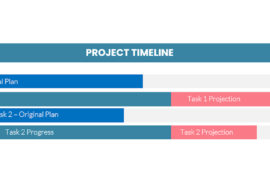 I’m a child of the 60s. Born in 1958, I was 8 years old when the original Batman TV series came on the air in 1966 and only 10 when it wound up in 1968. It lasted a 120 episodes but the impression it made lasts to this day.
I’m a child of the 60s. Born in 1958, I was 8 years old when the original Batman TV series came on the air in 1966 and only 10 when it wound up in 1968. It lasted a 120 episodes but the impression it made lasts to this day.
In the world of Adam West and Burt Ward who played Batman and Robin, there was a ‘bat’ solution to everything. No matter what the problem, Batman would have the solution. The Batmobile, Batboat, Batplane and Batcave all had their place. And, if you were someone who needed help no matter how difficult, how could you reach Batman? Well, with the Batphone of course! Pick up the Batphone and help would be on the way.
I’m nostalgic but reminiscing about a 1960’s series really isn’t my point today. It’s over 40 years since we were introduced to the red Batphone but we’ve got many clients who would dearly love to get their hands on one. I know I get calls on a regular basis from people hoping that I’m the person who could answer the Batphone and deliver them the help they want.
In the world of enterprise project management systems, a Batphone would be a wonderful thing to have. God knows, I wouldn’t mind the number myself from time to time. The problem is, enterprise project management solutions have always sounded easier to deliver than they are. There are a number of reasons for that.
Firstly, enterprise software of all kinds is now dependent on a “stack” of technology. They require a database and a database server, an application and an application server, there must be middleware, security and identification systems, middleware communications, the operating systems, a web server, client browser or other software and operating systems, firewall servers and probably email servers. Each and ever one of these elements should, you’d think, be designed to work with the other, but in fact, all those elements have probably been created with multiple purposes in mind. In fact, getting them all to work together is challenging enough but we also have a myriad combination of hardware and network issues. Oh, and we haven’t mentioned international versions and “localization” complexities.
That’s just the building blocks of the modern enterprise system. There’s a massive second element and that’s configuration. There are resource, rate, task and project tables, system options, report parameters, customizable fields, algorithm options, calendars, and ancillary files such as WBS’s, OBS’s and other categorizing tables to populate. Each of these can have an effect on what your enterprise system can do for you. How should you be organizing the system to generate the effects you desire? For most large epm systems there is a manual of course and then for many there are 3rd party books and resources that can help with each element of the system.
The third and more significant challenge is to decide what you want to accomplish with your epm system. To determine the functionality to use in your epm system, you’ve got to spend some time thinking about how you’d like to manage your projects and your portfolio of projects. You’ll need to think about how to do preliminary schedules, determine the metrics for valuable vs. non-valuable projects, resource capacity planning, resource allocation, resource conflict management, project tracking, management intervention, costing, estimating, variance reporting and more. To do this you’ll need some knowledge of what your epm system is capable of and a lot of knowledge about how to manage projects.
There’s a workflow challenge to be managed too. Where will the data come from that will power this system? How will the data be gathered in such a way that the benefits of the epm system aren’t outweighed by the work required to feed it with data.
Did I mention training? Not ever project management user is created equal. You’ll need a skills inventory and a plan for ensure the people who need to do certain things with the epm system have the skills to do so.
Oh, what about changes? When any employee changes roles, you’ve got a training challenge and whenever there’s a new version of your epm software (as happens regularly) each of the elements above needs to be thought of again.
Is it any wonder we’d all love a Batphone?
For those of you who remember Batman, you know that he never charged for his services and, no matter how clever or diabolical the villain, Batman was always able to vanquish him within the 30 minutes available to him.
I must get all the calls from people who remember that part of the show. On a regular basis a call comes in for someone who thought that getting their epm system up and running would be a simple affair that the lowliest intern in their office could get underway perhaps with an hour or two of assistance from an internal IT person.
When that fails, there’s usually a second attempt; this time with someone more senior who’s given a couple of weeks to achieve victory.
That too has little hope of success and by week 8 or 26 or 52, often the organization regroups and somewhere in there I’ll often get the call. It’s terribly upsetting to most people when I tell them that their simple upgrade may be several weeks of work or that that simple “reinstallation” they want to do is senseless if they don’t decide first what they want to accomplish with the epm product they’ve already purchased.
On a semi-regular basis, I have someone on the phone who describes to me how long it should take for me to fix their problem. They, of course, don’t have any clue how to fix it or they’d have done it already. But, they also know with a certainty how my personnel should fix it and how long it’ll take (usually an hour or two). We have little choice but to decline such calls.
Another regular call is someone who has a big problem but describes it as a solution. “I need you to come and create a proper report,” they’ll say. “What do you want to have in it?” I’ll ask. They won’t know. I always ask the client to describe the business problem and offer to help describe a solution to that but it’s harder to get people to think that way than you’d think.
It’s no surprise perhaps that there is more and more movement towards hosted epm solutions. I know the IT industry expects that enterprise solutions of all kinds will move this way to avoid at least the technological “stack” challenge and let clients focus their attention on the business and configuration aspects of the system.
People who deploy enterprise project management need to take into account the complexity of the business and technical challenge because there’s no Batphone really.
It’s a shame too cause I’d be using it all the time.




